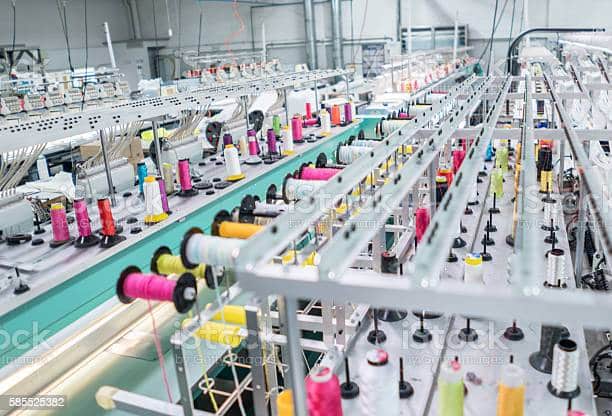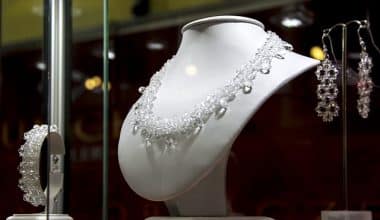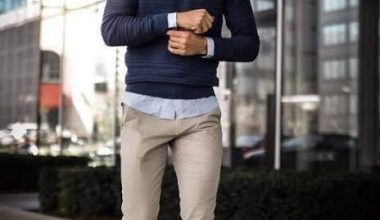If you’re starting a clothing brand, finding the right manufacturer is crucial. In this post, we’ll explore starting a clothing brand and finding the best clothing manufacturers to help you create a standout product.
How Do I Start My Clothing Brand?
#1. Do a Market Research
When starting any business, the first step to take is to study the market you want to enter. Study the trends and successful models in the industry. That way, you will know what to engage in and what not to do.
In an industry like fashion, the trends are ever-changing. What is in vogue today might lose relevance and appeal in a few years or even months. To start a successful clothing business, you need to understand what people want and what they need to wear.
Places you can run basic market research;
- Facebook Analytics
- Google Trends
#2. Choose a Niche
Every business has niches. Someone can focus on it, and clothing manufacturing is no different. There are varieties of clothing manufacturing you can choose from to create your clothing line.
Niche selection can be tricky, but picking a suitable niche will make your manufacturing process much easier, and then, some questions you should answer to help you pick a profitable niche.
What is your interest in fashion? What need are you trying to provide? Who are your competitors? What resources are available to you? What will be your unique selling point?
Some niches in clothing manufacturing include streetwear, sportswear, swimwear, luxury fashion, costumes, and novelty clothing.
#3. Identify Your Target Audience
The specific group of people who need and would buy the clothes you make is your target audience. The trends among these groups of people will influence a lot of factors in your manufacturing process, from the material you use to your marketing methods.
Running a successful clothing brand requires you to have a good understanding of who your target audience is and also, understanding what they need and how to provide it gives your business better chances of succeeding and can also aid in decision-making and which direction to take the brand.
Two things your target audience research should tell you are; (I) The demographics of your target audience (age, gender, income, marital status, geographic location, etc.) (ii) Their Psychographics (Their likes and dislikes, hobbies, interests, lifestyle traits, buying behaviors, etc.)
#4. Establish Your Unique Selling Point
Establishing a unique selling point (USP) is crucial for any clothing brand to stand out from competitors and attract customers. To develop a strong USP, a brand needs to define its values, understand its target market, and research competitors.
A unique design aesthetic, such as using unique fabrics, patterns, or colors, can also help differentiate a brand. Focusing on sustainability, offering exceptional customer service, and telling an interesting brand story can set a brand apart from competitors.
By establishing a USP, a clothing brand can create a strong brand identity and build a loyal customer base. Creating a compelling USP requires time and work, but it will have a significant impact on a clothing brand’s success.
#5. Draw a Budget Plan
Drawing up a budget plan is essential for any clothing brand to ensure financial stability and success. Making a budget plan begins with determining the startup costs, which include design, materials, production, and marketing expenses. The cost of renting a workspace, purchasing equipment, and hiring clothing manufacturers should also be considered.
After the startup costs are determined, the ongoing expenses, such as rent, utilities, employee salaries, and marketing, should be calculated. It is important to consider unexpected expenses and set aside a portion of the budget for emergencies. Once the expenses are calculated, the expected revenue from sales should be estimated.
The budget plan should be reviewed regularly to ensure the brand is on track financially. A clothing brand can ensure its financial stability and long-term success by following a budget plan.
#6. Create a Business Plan
A business plan is essential when setting up your clothing line. A good business plan gives you a general view of what the business is and what you intend to achieve. It will also point you in the right direction for your company. It is where you lay out your business goals.
A good business plan should be able to describe your company’s identity, mission statement, and team members. Your business plan should include market research, product overview, and a compelling explanation for anticipated success.”
Use this business plan to pitch potential investors and partners, including a funding section with the required amount and allocation.
#7. Build Your Team and Start Designing Your Clothes
Another step in building a successful business is gathering a good team. Startups are hard, and you’ll need highly qualified people to run operations with you.
Starting with a reliable team is key to building a sustainable business. You will want to build a team of people who are professional, driven, reliable, and skilled. The team members should have startup experience in addition to business experience.
That’s because it is a lot harder to get a business off the ground than it is to maintain operations in a thriving business. You will also need designers and specialists to create prototypes of your garments.
#8. Find Clothing Manufacturers
Finding the right manufacturer for your clothing line is a tremendous step when starting your business. It’s vital, as working with the wrong manufacturer can affect the production output. Carry out intensive research to find the manufacturer that best suits your interests.
Before contacting a clothing manufacturer, define your required qualities, budget, and desired clothing quantity. Having these at hand will make the search for a manufacturer easier.
#9: Create Awareness and Find Investors
Creating awareness and finding investors for a clothing brand is a crucial step toward building a successful business. One effective way to create awareness is through social media platforms, such as Instagram, Facebook, and Twitter. Utilize these platforms to showcase the unique value proposition of your brand, including your mission, vision, and the quality of your products. Collaborating with influencers and bloggers in the fashion industry can also help to increase visibility.
In addition to social media, attending trade shows and events related to the fashion industry can also help to create awareness and network with potential investors. These events are an excellent opportunity to showcase your brand and products, connect with like-minded individuals, and gain valuable feedback from industry experts.
To find investors for your clothing brand, it is crucial to create a compelling pitch that outlines your brand’s potential for growth and profitability. Reach out to venture capitalists and angel investors who have experience in the fashion industry and have a track record of investing in successful fashion brands.
It is essential to have a clear understanding of your finances, including revenue projections, cost of goods sold, and marketing expenses.
#10. Market Your Product
Marketing your clothing brand requires a strategic approach to effectively reach your target audience and promote your products. Utilize social media platforms like Instagram, Facebook, and Twitter to showcase your clothing line, engage with your followers, and attract new customers.
Collaborate with influencers and bloggers to increase your brand’s visibility and credibility. Offer promotions and discounts to incentivize customers to purchase your products, and use email marketing to keep them informed of new releases, promotions, and events.
Finally, don’t forget about the importance of packaging and customer service to create a memorable and positive experience for your customers because by combining these strategies, you can effectively market your clothing brand and build a loyal customer base.
Manufacturing Your Clothing Line
The basis of creating your clothing line is building a cooperative relationship with a clothing manufacturer. Take your time to do proper research on clothing manufacturers to find one that best fits your brand’s needs.
When selecting a clothing manufacturer, it is important to consider their ability to meet your specific requirements.
Specifically, you need to ensure that they can deliver the clothes you design within the time frame you specify and do so while staying within your budget.
Additionally, it’s crucial to keep in mind that timely delivery and staying within budget are essential factors for ensuring a successful and profitable business relationship with your clothing manufacturer.
Choosing a cloth manufacturer that doesn’t meet the needs of your clothing line can make clothing manufacturing a challenge for you.
How Do I Find Clothing Manufacturers?
#1. Check Directories
Directories are a great place to find clothing manufacturers. They provide you with a wealth of clothing manufacturing services.
It is better to stick with well-known online directories for more accuracy and when you’ve found a clothing manufacturer, you can reach out to them directly and explain exactly what you’re looking for.
#2. Use Facebook Group
Fashion enthusiasts have created several Facebook groups for fashion entrepreneurs, and you can find information on clothing manufacturers by joining the groups and using the resources to locate one.
On Facebook groups, you can also ask questions and get directions on anything that has to do with starting a clothing line
#3. Attend Trade Shows & Industry Meet-ups
Attending industry meetups and trade shows allows you to meet with factory representatives in person. It gives you excellent time to inquire about requirements for production, and you can decide whether their factory is the best fit for your brand.
Other ways to find clothing manufacturers include using search engines to find their websites, networking, and asking for a reference from people already in the industry.
Is Clothing Manufacturing Profitable?
Clothing manufacturing can be a profitable business if done correctly and like any other industry, profitability depends on a variety of factors, such as market demand, production costs, pricing strategy, and competition.
One of the biggest challenges in the clothing manufacturing industry is keeping production costs low while maintaining quality because these affect production costs including raw material prices, labor costs, energy costs, and production efficiency.
Another important factor is market demand. If there is a high demand for your product, you may charge a premium price and generate higher profits. However, if there is a lot of competition in the market, you may need to price your products lower to remain competitive.
To be successful in the clothing manufacturing industry, it is important to have a well-defined business strategy, a strong brand image, and efficient operations. It is also important to stay up-to-date with changing consumer trends and preferences, as well as new technologies and production methods that can help you reduce costs and increase efficiency.
Overall, clothing manufacturing can be profitable, but its success depends on a variety of factors and careful planning.
How Much Does Clothing Manufacturing Cost?
There is no general answer to how much clothing manufacturing costs because the cost varies from one entrepreneur to another. The cost will be determined by the size of your clothing line, who your target audience is, the quality you intend your clothes to be, etc. As this varies across startups, so will the manufacturing cost.
How Much Does It Cost To Start a Clothing Line?
Starting a clothing line could be expensive or cheaper depending on the scale and size you are aiming for your clothing line. Several factors determine what the cost of starting the clothing line will be. The costing factors include;
- Your production location
- Cost of materials
- Quantity of clothes you intend to manufacture
- The cost of marketing
- Cost of setting up a website or online store
- Designing costs
- Cost of labor
- Acquiring a business permit
Is it Cheaper to Buy Clothes or Make Them?
There are several factors that determine this, such as material cost, design complexity, labor cost, and equipment availability.
Making Clothes from Scratch
In general, creating clothes from scratch may come at a higher price point compared to purchasing ready-made clothes. This is especially true when you are starting out without any sewing equipment or materials. The expenses of buying fabric, patterns, and sewing tools can quickly accumulate, especially for intricate garments.
Producing your own clothing may seem expensive at first. However, it can become more cost-effective in the long run if you have the necessary skills, equipment, and resources to create durable and high-quality pieces.
Who is the Top Clothing Manufacturers?
It is difficult to determine a single “top” clothes manufacturer, as there are many well-known and successful companies in the fashion industry. However, here are some of the largest and most well-known clothing manufacturers in the world:
- Levi Strauss & Co.: This Spanish company is the parent company of popular brands such as Zara, Pull & Bear, Massimo Dutti, and Bershka.
- H&M: This Swedish company is known for its trendy and affordable clothing and has stores in over 70 countries.
- Nike: This American company is a leading manufacturer of sportswear and athletic shoes.
- Adidas: This German company is also a major player in the athletic wear market, and also produces clothing and accessories.
- VF Corporation: This American company owns a variety of well-known brands, including The North Face, Timberland, and Vans.
- Fast Retailing: This Japanese company is the parent company of Uniqlo, a popular clothing brand known for its affordable basics.
- PVH Corp.: This American company owns several popular clothing brands, including Calvin Klein and Tommy Hilfiger.
- Kering: This French luxury goods company owns several high-end fashion brands, including Gucci, Saint Laurent, and Balenciaga.
- LVMH: This French company is another major player in the luxury goods market, and owns brands such as Louis Vuitton, Christian Dior, and Givenchy.
Where is the Cheapest Place to Manufacture Clothes?
The answer to this question can vary depending on a number of factors, including the type of clothing being manufactured, the materials used, and the overall cost of labor and production in different regions.
Generally speaking, some countries are known for having lower manufacturing costs due to lower wages and production costs. Some of the countries that are often cited as being relatively inexpensive places to manufacture clothes include Bangladesh, Vietnam, Cambodia, India, Pakistan, Indonesia, Ethiopia, and China.
It is important to note, however, that while these countries may have lower labor and production costs, there may also be additional expenses associated with importing goods, such as shipping and customs fees. Additionally, companies that prioritize ethical and sustainable manufacturing practices may choose to manufacture clothing in countries with higher labor standards and environmental regulations, even if the costs are higher
Related Articles
- STARTING A CLOTHING BRAND: Simplified Step-By-Step Guide
- HOW TO OPEN A CLOTHING STORE 2023: Best Clothing Store Ideas in 2023
- HOW TO SELL CLOTHES ONLINE: Detailed Step-By-Guide
- PRIVATE LABELING MANUFACTURERS: The Top 15 picks to kickstart your brand
- Fashion Designer: Meaning, Salary, Famous Designers & Courses
References
- Orbelo
- Brydenapperel






